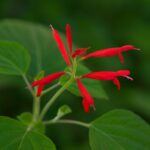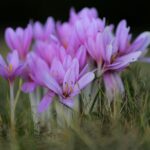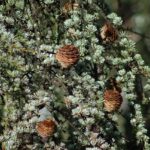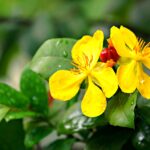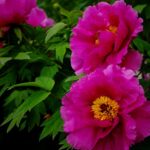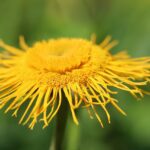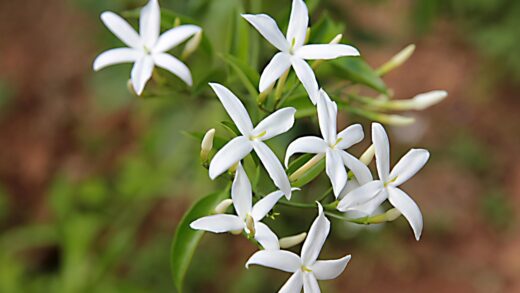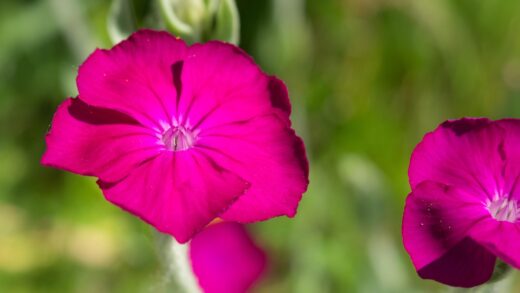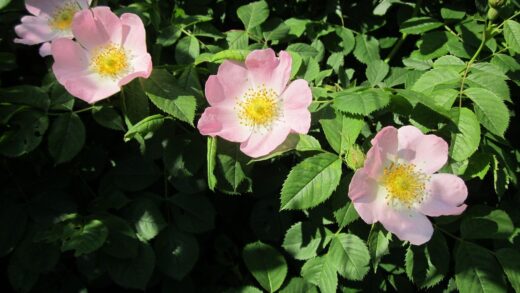Pruning is an essential and transformative practice in the cultivation of lantana, serving as the primary tool to control its size, shape its form, and, most importantly, stimulate an abundant and continuous display of flowers. As a vigorous and fast-growing plant, an unpruned lantana can quickly become a tangled, woody mass with reduced flowering concentrated only at the tips of its long, sprawling branches. Strategic cutting invigorates the plant, encouraging it to produce a flush of new growth from which fresh flowers will emerge. Mastering a few simple pruning techniques throughout the year will ensure your lantana remains a compact, healthy, and incredibly floriferous centerpiece in your garden.
The timing and intensity of pruning can be adapted to achieve different goals. A hard, rejuvenating prune in the early spring is used to establish a strong framework for the new season’s growth and to remove any old or winter-damaged wood. Throughout the summer, lighter, more frequent trimming and pinching helps to maintain a tidy shape and encourages the plant to branch out, thereby increasing the number of flowering stems. This ongoing maintenance is key to preventing legginess and maximizing the plant’s floral output during its peak season.
Another critical aspect of pruning for bloom production is deadheading, which is the practice of removing spent flower clusters. For fertile varieties of lantana, allowing the old flowers to develop into seeds signals the plant to slow down its blooming cycle and divert energy into seed production. By promptly removing these faded blooms, you effectively trick the plant into producing more flowers in a continued effort to reproduce. This simple task can make a dramatic difference in the sheer volume of color your plant produces from spring until frost.
Ultimately, pruning should not be viewed as an aggressive act but rather as a collaborative process with the plant. By understanding how lantana grows and flowers—on new wood—you can make precise cuts that align with its natural tendencies, guiding its energy towards the results you desire. A well-pruned lantana is not only more beautiful and productive but also healthier, with better air circulation that helps to ward off diseases. It is a fundamental skill that elevates lantana from a simple plant to a spectacular garden performer.
The purpose and benefits of pruning
The primary purpose of pruning lantana is to encourage and sustain prolific blooming. Lantana flowers are produced on new growth, or “new wood.” Therefore, by cutting back the stems, you stimulate the plant to produce multiple new shoots from below the cut. Each of these new shoots is a potential site for a new flower cluster. This is why regular trimming results in a plant that is much more covered in blooms than one that is left to grow naturally, which tends to flower only at the ends of its long stems.
More articles on this topic
Another key benefit of pruning is size and shape management. Lantana is a naturally vigorous grower and, depending on the variety and climate, can become a large, sprawling shrub very quickly. Pruning allows you to maintain the plant at a desired size that is appropriate for its location, whether it’s in a container, a mixed border, or a formal hedge. Regular trimming helps to create a denser, more compact, and more aesthetically pleasing form, preventing the open, woody, and unkempt appearance that can develop over time.
Pruning also plays a crucial role in the overall health of the plant. By selectively removing branches, you can improve air circulation through the center of the plant. This increased airflow helps the foliage to dry more quickly after rain or watering, which significantly reduces the risk of fungal diseases like powdery mildew. Additionally, the process of pruning provides an opportunity to remove any dead, damaged, or diseased wood, which cleans up the plant and eliminates potential entry points for pests and pathogens.
Finally, a hard prune in the early spring serves to rejuvenate the entire plant. This practice removes the old, tired, and less productive woody growth from the previous year. The plant responds by sending up a fresh flush of vigorous new stems from its base. This new growth is healthier, more productive in terms of flowering, and creates a much more attractive plant for the coming season. This annual renewal is essential for maintaining the long-term vigor and beauty of perennial lantanas in climates where they survive the winter.
Spring rejuvenation pruning
The most important prune of the year for perennial lantana (in climates where it overwinters) is the hard rejuvenation prune performed in early spring. The ideal time for this is after the last threat of a hard frost has passed but before the plant has pushed out a significant amount of new growth. This timing ensures that you are not cutting off new growth that the plant has already expended energy to produce, but you are also not leaving the plant exposed to potential late frost damage on freshly cut stems.
More articles on this topic
The process involves cutting the entire plant back significantly. Using a clean, sharp pair of loppers or pruning shears, you should cut all the stems back to a height of approximately 15 to 30 centimeters from the ground. While this may seem severe and can be intimidating for new gardeners, it is the single best thing you can do to ensure a healthy and productive plant for the upcoming season. Lantana is incredibly resilient and will respond to this hard pruning with an explosion of vigorous new growth from the base and the remaining stems.
This hard prune effectively removes all of the old, woody stems that would otherwise produce fewer, smaller flowers. It forces the plant to build a new framework of fresh, flexible, and highly productive stems. The resulting plant will be much fuller, denser, and more uniform in shape. It also provides an opportunity to reshape the plant if it has become lopsided or has developed an awkward growth pattern over the previous years.
For lantanas grown as annuals in colder climates and overwintered indoors, a similar hard prune should be performed before you begin the process of moving them back outdoors. Pruning them back hard while they are still inside or just as they are being moved out encourages them to branch out from the base rather than continuing to grow from the tips of the old, overwintered stems. This sets them up for a much bushier and more floriferous performance once they are planted in the garden.
Summer maintenance and pinching
After the initial spring prune has established the plant’s framework, ongoing maintenance throughout the summer is key to keeping it looking its best and flowering continuously. The most common and effective technique for summer pruning is “pinching” or “tipping back.” This involves using your fingers or a small pair of pruners to snip off the very tip of each growing stem, removing just the last centimeter or so of new growth. This simple act removes the terminal bud, which is responsible for apical dominance (the tendency to grow straight up).
Removing the terminal bud signals the plant to activate the lateral buds located further down the stem. This results in the stem branching out into two or more new stems from below the point where you pinched. Since each new stem will eventually produce a flower cluster at its tip, this pinching process effectively doubles or triples the number of potential blooms on that branch. Performing this task regularly, especially in the early to mid-summer, is the secret to achieving a plant that is incredibly dense, bushy, and absolutely covered in flowers.
Throughout the growing season, you can also perform light shearing or trimming to maintain the plant’s desired shape and size. If a few branches start to grow much longer than the others, simply trim them back to be in line with the rest of the plant. This light but frequent pruning is much better for the plant than letting it get completely overgrown and then having to perform a drastic cutback mid-season, which could temporarily halt the flowering cycle.
This summer maintenance also provides a continuous opportunity to remove any stray dead or damaged leaves and stems, keeping the plant looking clean and tidy. It allows you to stay on top of the plant’s growth, guiding it into the form you want rather than reacting to its sometimes wild and unruly nature. A little bit of attention every week or two will pay huge dividends in the overall appearance and performance of your lantana.
The importance of deadheading
Deadheading is the horticultural practice of removing spent or faded flowers from a plant before they have a chance to set seed. For many flowering plants, including the fertile varieties of lantana, this is one ofthe most effective ways to promote continuous blooming. The primary biological purpose of a flower is to produce seeds to ensure the next generation. Once a plant successfully produces seeds, its internal hormonal signals can change, telling it that its reproductive mission is complete for the time being, which can cause the flowering cycle to slow down or stop altogether.
By deadheading, you interrupt this process. When you snip off the old flower clusters, the plant senses that its attempt at reproduction has failed. In response, it channels its energy back into producing more flowers in another attempt to create seeds. This effectively tricks the plant into a prolonged state of blooming, extending its floral display throughout the season. For lantana, the spent flower clusters are easy to spot and should be snipped off at the point where the flower stalk meets the stem.
It is important to note that not all lantana varieties require deadheading to continue blooming. Many modern hybrid cultivars have been bred to be sterile, meaning they do not produce viable seeds. These varieties, often found in series like ‘Luscious’ or ‘Bandana’, will naturally continue to bloom profusely all season long without the need for deadheading, as they never receive the hormonal signal to stop. If you have one of these sterile varieties, deadheading is purely for cosmetic purposes to keep the plant looking tidy.
However, for the common, older varieties of Lantana camara that do produce the small, dark berries after flowering, deadheading is crucial for maximizing bloom production. It is also a responsible gardening practice, as these berries can be toxic if ingested by pets or children, and in some warm climates, they can allow the plant to self-seed and become invasive. Regularly removing the spent flowers prevents both of these potential issues while simultaneously boosting the plant’s beauty.
📷 Flickr / Szerző: Mauricio Mercadante / Licence: CC BY-NC-SA 2.0







